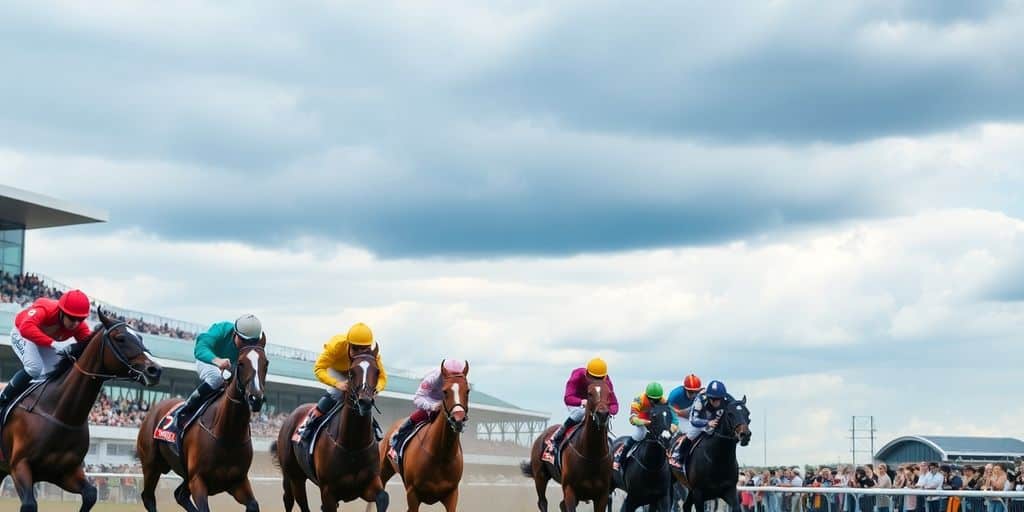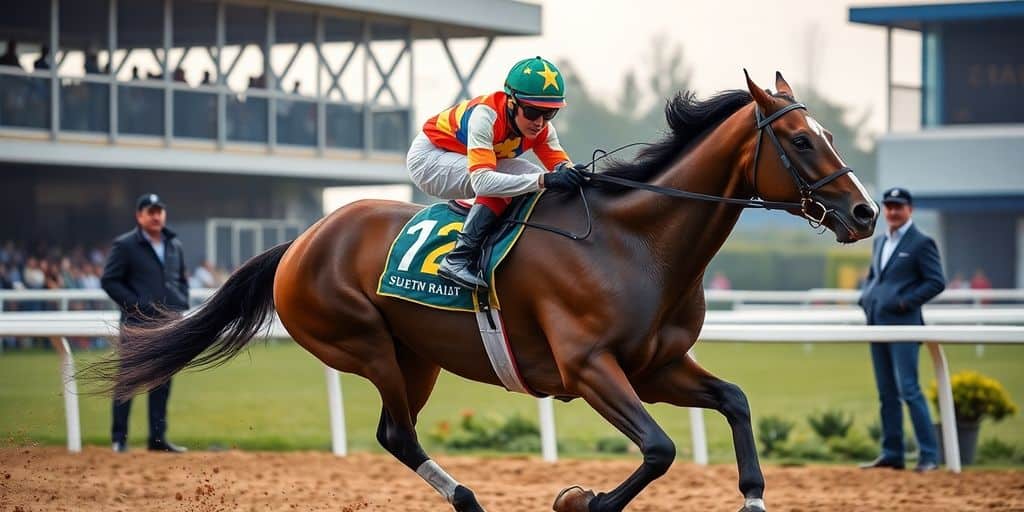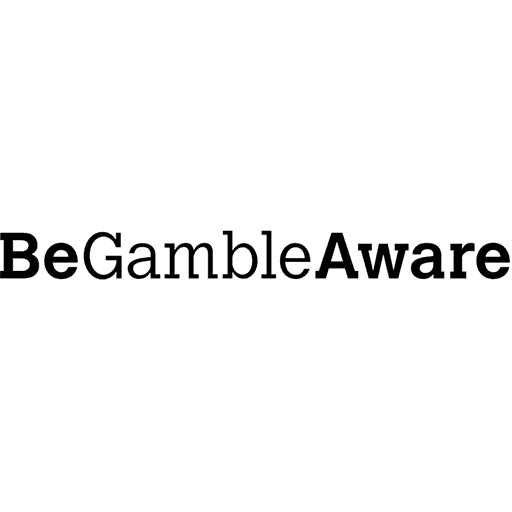Horse betting can seem overwhelming at first, but it doesn’t have to be. If you’re new to the game, this guide will break down the essentials to help you understand the basics, develop strategies, and avoid common pitfalls. By the end, you’ll feel more confident placing your bets and enjoying the excitement of the races.
Key Takeaways
- Learn the different types of horse bets to find what suits you best.
- Understanding odds is crucial for making informed bets.
- Handicapping involves analyzing past performances and speed figures.
- Managing your bankroll is key; set a budget and stick to it.
- Avoid common mistakes like overbetting favorites and neglecting research.
Understanding Horse Betting Basics

So, you’re thinking about getting into horse betting? It can seem a little intimidating at first, but once you grasp the basics, it’s actually pretty straightforward. I remember my first time at the track – I was completely lost! But don’t worry, we’ll break it down.
Types of Horse Bets
There are a bunch of different ways to bet on a horse race, and it’s good to know your options. The simplest is a "win" bet – you’re just betting that your horse will come in first. Then there’s "place" (horse finishes first or second) and "show" (horse finishes first, second, or third). These are your basic straight bets.
But it gets more interesting! You can also try exotic wagers like exactas (picking the first two horses in the correct order), trifectas (first three in order), and superfectas (first four in order). These are harder to win, but the payouts can be huge. I’ve never hit a superfecta, but a guy can dream, right?
Here’s a quick rundown:
- Win: Horse must finish first.
- Place: Horse must finish first or second.
- Show: Horse must finish first, second, or third.
- Exacta: Pick the first two finishers in the correct order.
- Trifecta: Pick the first three finishers in the correct order.
- Superfecta: Pick the first four finishers in the correct order.
Reading the Odds
Understanding the odds is super important. They tell you how much you stand to win based on your bet. Odds are usually displayed in a format like 2-1, 5-2, or 10-1. A 2-1 means that for every $1 you bet, you’ll win $2 (plus get your original dollar back). So, if you bet $10 at 2-1 and win, you get $30 back (your $10 bet plus $20 in winnings).
Lower odds mean the horse is considered more likely to win, but the payout will be smaller. Higher odds mean the horse is less likely to win, but the payout will be bigger. It’s all about finding the right balance between risk and reward. I usually look for horses with decent odds that I think have a good shot at winning. It’s a gamble, but that’s the fun of it!
Understanding Race Types
Not all horse races are the same. There are different types of races, and each has its own set of rules and conditions. Some common types include:
- Maiden races: These are for horses that have never won a race. It’s a good place to see up-and-coming horses.
- Claiming races: In these races, horses are available for purchase (claimed) by other owners. The horses are usually of similar ability.
- Allowance races: These races have certain conditions, like weight allowances for younger horses or horses that haven’t won a certain number of races.
- Stakes races: These are the big ones! Stakes races are the highest level of competition and offer the biggest purses (prize money). Think of the Kentucky Derby – that’s a stakes race.
Knowing the type of race can give you insights into the horses’ abilities and motivations. For example, a horse might be entered in a claiming race because the owner wants to sell it, or a horse might be entered in an allowance race to take advantage of a weight advantage. Understanding these factors can help you make smarter bets. Also, make sure to know your jockeys and trainers!
Handicapping Techniques for Beginners
Okay, so you want to get better at picking horses? It’s not just luck; there’s actually a lot you can learn to improve your chances. It’s like detective work, piecing together clues to figure out which horse has the best shot at winning. The goal is to figure out which horses have the best chance of winning and if the betting odds are worth it.
Analyzing Past Performances
This is where you really start digging in. You’re looking at a horse’s history – where they’ve raced, how they’ve finished, and what the conditions were like. Don’t just look at the last race; go back several races to see trends.
- Consistency is key. A horse that consistently finishes in the top three is generally a better bet than one that’s all over the place.
- Pay attention to the class of the races. Was it a high-stakes race, or a lower-level claiming race? A horse that does well in easier races might struggle when they move up in class.
- Look for any notes about the race. Did the horse have a bad start? Were they blocked at some point? These things can affect the outcome and might not reflect the horse’s true ability.
It’s important to remember that past performance is not a guarantee of future results. Things change, horses improve or decline, and luck always plays a role. But past performances give you a solid foundation to start from.
Evaluating Speed Figures
Speed figures are a way to put a number on how fast a horse has run. There are different systems, but the idea is the same: to compare horses based on their speed, adjusting for track conditions and distance.
- Higher numbers are better. A horse with a consistently high speed figure is usually a good contender.
- Look for improving speed figures. A horse that’s getting faster with each race could be peaking at the right time.
- Compare speed figures for the same distance and track conditions. It’s not fair to compare a horse that ran a mile on a fast track to one that ran a mile on a muddy track.
Identifying Key Factors
There are a lot of things that can affect a horse’s performance, so it’s important to consider all the angles. Here are a few key factors to keep in mind:
- Jockey and Trainer: A good jockey can make a big difference, and a successful trainer knows how to get the best out of their horses. Look for jockeys and trainers with good win percentages.
- Track Conditions: Some horses prefer a fast track, while others do better on a muddy or sloppy track. Pay attention to the weather and how it might affect the race.
- Post Position: The starting position can be an advantage or a disadvantage, depending on the horse’s running style and the distance of the race. Horses on the inside might get trapped, while horses on the outside have to cover more ground.
It’s all about putting the pieces together and making an informed decision. Good luck!
Managing Your Bankroll Effectively
Okay, so you’re getting into horse betting. That’s cool! But before you start dreaming of yachts and early retirement, let’s talk about something super important: managing your money. Seriously, this is where a lot of people mess up. It’s easy to get caught up in the excitement and bet more than you should. Don’t be that person. Let’s break down how to handle your bankroll like a pro.
Setting a Betting Budget
First things first: figure out how much you can actually afford to lose. I know, it sounds negative, but it’s the truth. Horse betting should be fun, not a financial burden. Don’t use money you need for rent, bills, or groceries. Once you have that number, stick to it. Think of it as your entertainment budget for the ponies.
Here’s a simple way to think about it:
- Calculate Disposable Income: Figure out what’s left after all essential expenses.
- Allocate a Percentage: Decide what percentage of that disposable income you’re comfortable using for betting. 5%? 10%? Be honest with yourself.
- Set a Max Bet Size: Determine the maximum amount you’ll bet on a single race. This helps prevent chasing losses.
Tracking Your Bets
Seriously, write down every bet you make. Every. Single. One. It sounds tedious, but it’s the only way to see if you’re actually making progress or just throwing money away. Note the date, track, race number, horse, bet type, stake, and payout (if any). There are apps and spreadsheets for this, or you can just use a notebook. Find what works for you. This is a great way to understand betting on horse races.
Here’s what you should track:
- Date and Track
- Race Number
- Horse Name
- Bet Type (Win, Place, Show, Exacta, etc.)
- Stake (Amount bet)
- Odds
- Payout (if any)
- Net Profit/Loss
Adjusting Your Strategy
Okay, you’ve set a budget and you’re tracking your bets. Now what? Well, look at the data! Are you consistently losing money on certain types of bets? Maybe you should stick to straight bets (win, place, show) instead of trying to hit those big exotic payouts. Are you doing better at certain tracks? Focus on those. The point is to learn from your mistakes and adjust your strategy accordingly. Don’t be afraid to experiment, but always stay within your budget.
It’s important to remember that horse betting is a marathon, not a sprint. There will be ups and downs. The key is to stay disciplined, manage your bankroll wisely, and learn from your experiences. Don’t get discouraged by losses, and don’t get cocky after wins. Just keep learning and improving, and you’ll be on your way to becoming a more successful horse bettor.
Exploring Different Betting Strategies
Alright, so you’re getting the hang of the basics. Now it’s time to talk strategy. There’s more to horse betting than just picking a name you like. Let’s look at some ways to approach your wagers.
Straight Bets vs. Exotic Bets
Straight bets are your bread and butter: win, place, and show. Easy to understand, easy to play. Exotic bets? That’s where things get interesting, and potentially more profitable (or disastrous). Think exactas (picking the first two finishers in order), trifectas (first three), and superfectas (first four). The payouts can be huge, but the odds of winning are much lower. It’s a risk-reward thing. If you’re feeling confident in your handicapping, consider exotic bets for a bigger potential payday.
Value Betting Explained
Value betting is all about finding situations where the odds offered by the bookmaker are higher than your assessment of the horse’s actual chance of winning. Basically, you’re looking for horses that are undervalued by the public. It takes some work to figure out a horse’s true odds, but it can be worth it. Here’s a simple breakdown:
- Estimate the horse’s probability of winning (e.g., 30%).
- Convert that probability to implied odds (in this case, around 2.33-1).
- Compare your implied odds to the odds offered by the track. If the track is offering higher odds (say, 3-1), that’s a value bet.
Betting Against the Favorite
Everyone loves to bet on the favorite. But sometimes, the favorite is overbet, meaning their odds are lower than they should be based on their actual chances. This can create opportunities to bet against the favorite. Look for situations where the favorite has weaknesses, like a poor track record at the distance or a bad post position. It’s not about blindly betting against the favorite every time, but about identifying situations where the favorite is vulnerable. It’s all about finding those best horses that the public is overlooking.
Betting against the favorite can be a smart move, but it requires careful analysis. Don’t just bet against the favorite because they’re the favorite. Look for legitimate reasons why they might underperform. Consider factors like track conditions, jockey performance, and recent form. If the favorite is a true standout, it might be best to stick with them, but if there are doubts, betting against them could be a profitable strategy.
The Role of Jockeys and Trainers

Understanding Jockey Performance
Okay, so jockeys. They aren’t just sitting up there. A good jockey can seriously affect a horse’s chances. It’s about more than just holding on tight. They make split-second decisions during the race, like when to push the horse, where to position it on the track, and how to respond to what other riders are doing. Some jockeys are known for their aggressive riding style, while others are more patient. It really does make a difference.
- Look at their win percentage. A jockey with a higher win rate is generally a good sign.
- Consider their record at the specific track. Some jockeys just do better at certain locations.
- Check if they’ve had success with similar types of horses. A jockey who excels with sprinters might not be the best choice for a long-distance runner.
It’s easy to overlook the jockey, but don’t. Their skill and experience can be the deciding factor, especially in close races. Pay attention to who’s riding and how they typically perform.
Evaluating Trainer Success
Trainers are like the coaches of horse racing. They’re responsible for getting the horse in peak condition for the race. This means everything from diet and exercise to managing injuries and planning the horse’s racing schedule. A good trainer knows how to bring out the best in a horse. You can research track records and statistics to see which trainers excel with longshots.
- Look at their overall win percentage. A consistently high win rate suggests a skilled trainer.
- Check their record with first-time starters. Some trainers are particularly good at preparing young horses for their debut.
- See how they perform with horses returning from a layoff. Getting a horse back in shape after time off is a skill.
Impact of Jockey-Trainer Relationships
Sometimes, you’ll see the same jockey riding for the same trainer over and over. This isn’t always a coincidence. A strong relationship between a jockey and trainer can be a real advantage. They understand each other’s strategies and can work together to develop a winning plan. It’s like a quarterback and coach who are always on the same page. The jockey understands the trainer’s instructions, and the trainer knows how to best utilize the jockey’s strengths. It’s a partnership that can lead to consistent success.
Here’s a simple way to think about it:
| Jockey | Trainer | Potential Outcome |
|---|---|---|
| Good | Good | High chance of success |
| Good | Bad | Mixed results |
| Bad | Good | Horse might be well-prepared, but poorly ridden |
| Bad | Bad | Low chance of success |
Advanced Handicapping Concepts
Okay, so you’ve got the basics down. You know about speed figures, past performances, and all that jazz. But if you really want to up your game, it’s time to get into the nitty-gritty. This is where things get interesting, and where you can really start to find an edge over the casual bettor. It’s about digging deeper, looking for patterns, and understanding the subtle factors that can influence a race’s outcome. Advanced handicapping is all about finding value where others don’t.
Using Data Analytics
Forget gut feelings; let’s talk numbers. Data analytics in horse racing is about using stats to your advantage. I’m talking about things like:
- Regression analysis: To predict finish times based on various factors.
- Cluster analysis: To group horses with similar running styles or performance characteristics.
- Machine learning: To identify patterns that humans might miss.
It might sound intimidating, but there are plenty of tools and resources out there to help you get started. You don’t need to be a data scientist, but understanding how to interpret the data can give you a serious edge. For example, you might find that certain jockeys perform consistently better at a specific track, or that horses with a particular pedigree tend to excel in certain types of races. This is where you can find hidden value.
Spotting Trends in Racing
Racing isn’t random. There are trends everywhere if you know where to look. Are certain trainers hot at the moment? Do inside posts have an advantage on a particular track? Are horses that ran well in their last race more likely to perform well again? These are the kinds of questions you should be asking. Here’s a simple table to illustrate how you might track trends:
| Trend | Observation | Potential Implication |
|---|---|---|
| Trainer Win Percentage | Trainer X wins 25% of races at Track Y | Horses trained by X at Y might be undervalued |
| Post Position Success | Post 1 wins 20% of races at Track Z | Horses in Post 1 at Z might have a slight advantage |
| Sire Performance | Sire A produces winners in turf races | Offspring of A might excel on turf |
It’s important to remember that trends are just that – trends. They’re not guarantees. But they can provide valuable insights and help you make more informed betting decisions. Always consider the sample size and look for statistically significant trends, not just random occurrences.
Incorporating Weather Conditions
Don’t underestimate the weather! A sudden downpour can completely change the complexion of a race. Some horses love a muddy track, while others hate it. Pay attention to the forecast and look for horses with proven form on similar surfaces. A horse with great speed figures might be useless if it can’t handle a sloppy track. Similarly, a horse that typically runs mid-pack might suddenly find itself in contention if the frontrunners tire in the heavy going. Here are some things to consider:
- Track condition: Is it fast, good, sloppy, muddy, firm, or yielding?
- Horse’s preference: Does the horse have a history of running well on a particular surface?
- Jockey’s experience: Is the jockey experienced in riding on different track conditions?
By considering these advanced concepts, you’ll be well on your way to becoming a more sophisticated and successful horse bettor. Remember, it takes time and practice, but the rewards can be well worth the effort. You can create bets with more confidence.
Common Mistakes to Avoid in Horse Betting
Overbetting Favorites
It’s super tempting to just throw money at the horse with the lowest odds, right? Everyone thinks it’s a sure thing. But that’s a classic trap. Favorites win a certain percentage of the time, but they don’t win all the time, and their odds often don’t reflect the actual risk. You’re paying a premium for that perceived safety. Look for horses with better betting strategy value, even if they aren’t the top pick.
Ignoring Track Conditions
Track conditions matter a lot. A horse that runs great on a fast, dry track might struggle on a muddy or sloppy one. Some horses just don’t like certain surfaces. Always check the weather forecast and the track conditions before placing your bets. It can completely change the outcome of a race. It’s like driving a car with the wrong tires – you’re not going to get very far. Here’s a quick guide:
- Fast: Dry, firm surface. Good for speed horses.
- Good: Slightly damp, but still firm.
- Sloppy: Wet surface with standing water. Favors horses that like to run in the mud.
- Muddy: Deep, wet surface. Similar to sloppy, but even more challenging.
Failing to Research Thoroughly
Don’t just pick a horse because you like its name or the jockey’s colors. Do your homework! Look at past performances, speed figures, and other relevant data. The more you know, the better your chances of making informed decisions. It’s not about luck; it’s about knowledge. Consider these points:
- Past Performances: How has the horse performed in previous races?
- Speed Figures: What are the horse’s speed ratings?
- Jockey and Trainer: Who is riding and training the horse?
- Post Position: Where is the horse starting from?
It’s easy to get caught up in the excitement of horse racing, but remember that it’s a game of skill and knowledge. The more time you spend researching and analyzing the data, the better your chances of winning. Don’t be afraid to put in the work. It will pay off in the long run.
Final Thoughts on Horse Betting
So, there you have it! Horse betting can be a lot of fun, but it’s also a bit tricky. Remember, it’s all about finding a balance between enjoying the thrill of the race and making smart choices with your bets. Take your time to learn the basics, keep track of your bets, and don’t be afraid to ask questions. Every race is a new chance to learn something, and with practice, you’ll get better at spotting those winning horses. Just keep it fun, and who knows? You might just find yourself cheering for your favorite horse while cashing in on a few wins!
Frequently Asked Questions
What are the basic types of horse bets?
The most common types of horse bets include win, place, and show bets. A win bet means you pick a horse to finish first. A place bet means your horse can finish first or second, while a show bet allows your horse to finish in the top three.
How do I read horse racing odds?
Horse racing odds show how much money you can win based on a $2 bet. For example, if the odds are 5-1, you would win $10 if your horse comes in first, plus your original $2 back.
What is handicapping in horse racing?
Handicapping is the process of analyzing the horses, jockeys, and track conditions to predict which horse is most likely to win. This involves looking at past performances and other important factors.
How can I manage my betting money?
To manage your betting money, set a budget for how much you want to spend. Keep track of your bets and adjust your strategy based on your wins and losses.
What are exotic bets?
Exotic bets are more complicated than regular bets. They include bets like exactas, where you pick the first and second place horses in the correct order, and trifectas, where you pick the top three horses.
What mistakes should I avoid when betting on horses?
Some common mistakes include betting too much on favorites, not considering the track conditions, and not doing enough research on the horses and races.









